The first so-called modern Olympics took place in 1896 in Athens, Greece. But the inaugural Winter Olympics were not held until 1924 in Chamonix, France.
From 1924 to 1992, the Winter and Summer Olympics were the same year. In ’92 the Winter Games were celebrated in Albertville, France, followed by the Summer Games in Barcelona, Spain.
Then change came.
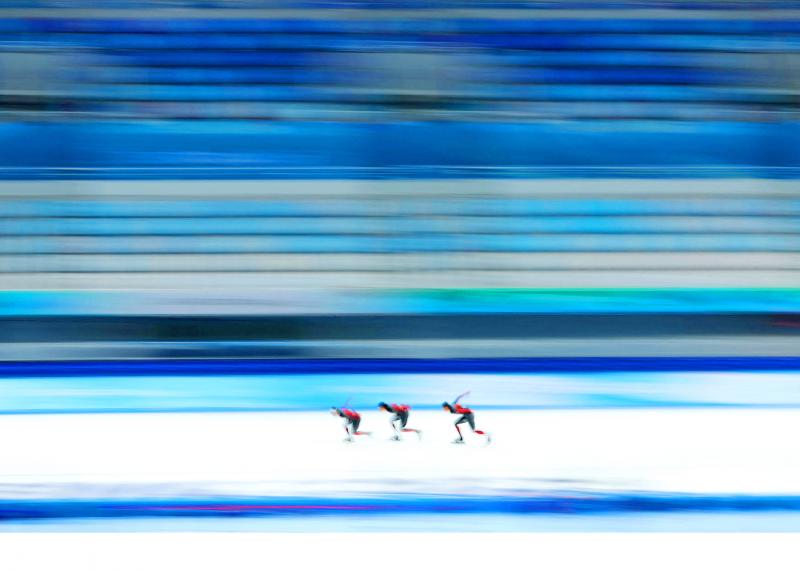
Photo: Reuter 照片:路透
Since 1994, an Olympics has been held every two years. The ’94 Winter Olympics took place in Lillehammer, Norway, followed by the Summer Games in 1996 in Atlanta, the US. Nagano, Japan, was next in 1998 with the Winter Games. That pattern was broken by the postponement of the 2020 Tokyo Summer Games until 2021 because of the coronavirus pandemic.
The Beijing Winter Games opened on Friday last week, just six months after Tokyo closed. They’ll be followed by the Summer Olympics in 2024 in Paris, France. Here’s a breakdown of why things have unfolded as they have.
WHY WERE THE GAMES MOVED TO EVERY TWO YEARS?
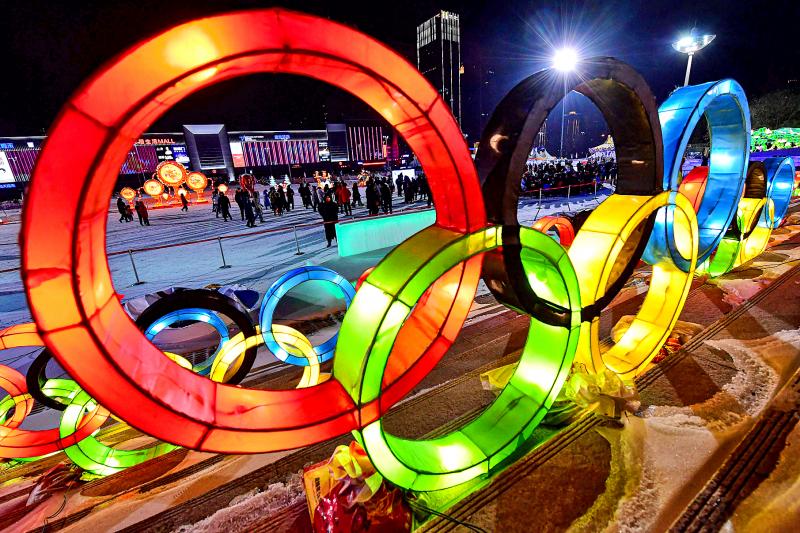
Photo: AFP 照片:法新社
Olympic historian Bill Mallon suggests the International Olympic Committee (IOC) was looking for more revenue. The IOC, he says, “thought they could get more sponsorship money by spreading the Games out more.”
Every two years also kept the Olympics in the public eye, and the move dovetailed with the increasing commercialization and professionalization of the Games.
BEIJING: FIRST FOR BOTH WINTER AND SUMMER
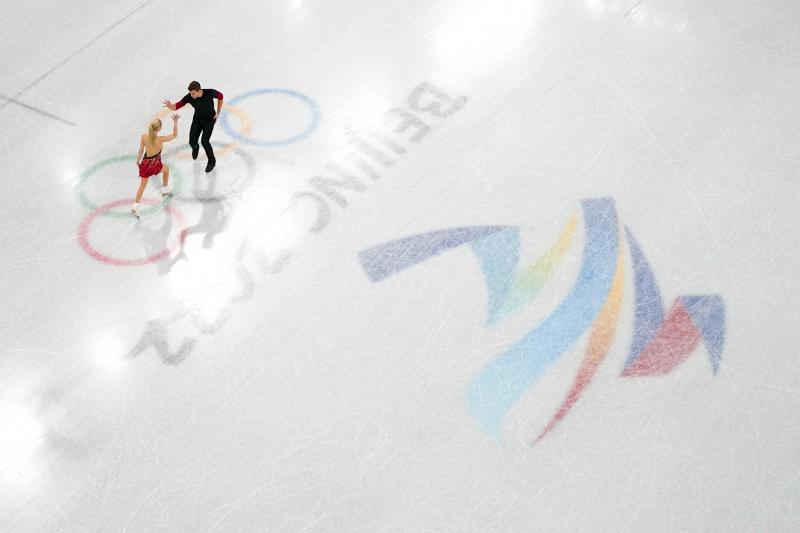
Photo: AP 照片:美聯社
Beijing is the most unlikely city to be the first to host both Summer and Winter Olympics. Of all the Winter Olympic hosts, it has the least tradition in winter sports.
Beijing was a longshot for 2022 until six European countries — including favorites Norway and Sweden — dropped out for cost or political reasons. Germany and Switzerland said “no” in referendums. The IOC was left to choose between Beijing and Almaty, Kazakhstan.
The Beijing Winter Olympics are expected to draw about 2,900 athletes from about 90 national Olympic committees. The Tokyo Olympics six months ago attracted 11,000 from just over 200 national bodies.
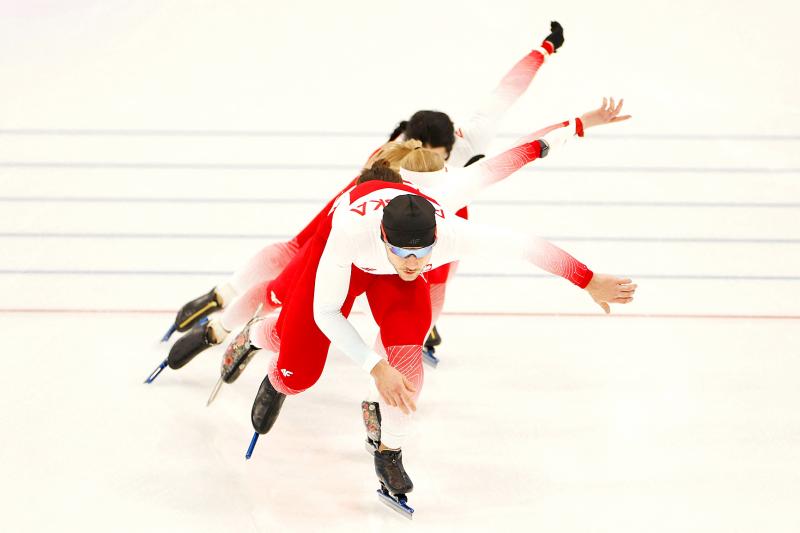
Photo: Reuters 照片:路透
(AP)
所謂現代奧林匹克運動會,是在一八九六年於希臘雅典首次舉行。但首屆冬季奧林匹克運動會,要到一九二四年才在法國霞慕尼舉行。
一九二四至一九九二年,冬季和夏季奧運會都是在同一年舉辦。一九九二年,冬季奧運會在法國阿爾貝維爾舉行,隨後的夏季奧運會則是在西班牙巴塞隆納。
然後變化來了。
自一九九四年起,奧運會每兩年舉辦一次。一九九四年冬季奧運會在挪威里爾哈默舉行,一九九六年夏季奧運會在美國亞特蘭大,然後是一九九八年在日本長野舉行的冬季奧運會。由於冠狀病毒疫情,二○二○年東京夏季奧運會延至二○二一年,打破了此模式。
北京冬奧於上週五開幕,距東京夏季奧運會閉幕僅六個月。之後的奧運會是將於二○二四年在巴黎舉行的夏季奧運會。以下說明幾項事態緣由。
奧運會為何變成每兩年一次?
奧運史學者比爾‧馬龍表示,國際奧委會尋求更多收益。他說,國際奧委會「認為可以透過推廣奧運會來獲得更多贊助資金」。
奧運每兩年舉辦一次,也能讓大眾持續關注,這也跟奧運愈趨商業化與職業化的走向合拍。
北京:第一個冬奧與夏奧皆辦過之城市
北京是最不看好成為第一個夏奧與冬奧皆辦過的城市。所有的冬奧主辦國中,北京的冬季運動傳統最少。
在二○二二冬奧主辦權的競逐中,北京原先希望不大,直到六個歐洲國家——包括最受歡迎的挪威育與瑞典——因成本或政治原因退出。德國及瑞士則是透過公投說「不」。於是國際奧委會只能在北京與哈薩克阿拉木圖之間做選擇。
北京冬奧會預計將有來自約九十個奧委會國家約兩千九百名選手參加。六個月前的東京奧運會吸引了一萬一千人參賽,來自兩百多個國家。
(台北時報林俐凱編譯)

Long before numerals and arithmetic systems developed, humans relied on tally marks to count. These simple, repeated marks — often just straight lines — are one of the earliest and most widespread methods of recording numbers. Archaeological findings suggest that humans began tallying in prehistoric times. During the Late Stone Age in Africa, humans began to carve notches onto bones to create tangible records of quantities. One of the earliest known examples is the Wolf bone, an artifact unearthed in Central Europe in 1937. This bone bears notches believed to be an early form of counting. Even more intriguing

A: In addition to Teng Kai-wei, Taiwanese infielder Cheng Tsung-che was called up temporarily to play for the Pittsburgh Pirates in early April. B: Yeah, Cheng is the 18th player in Taiwan’s baseball history to be moved up to the majors. A: Back in 2002, Chen Chin-feng became the first Taiwanese to play in the Major League Baseball (MLB), followed by Tsao Chin-hui, Wang Chien-ming, Kuo Hung-chih, Hu Chin-lung and Lin Che-hsuan. B: Those pioneers were later joined by Lo Chia-jen, C.C. Lee, Ni Fu-te, Chen Wei-yin, Wang Wei-chung, Hu Chih-wei, Tseng Jen-ho, Lin Tzu-wei, Huang Wei-chieh, Yu Chang,
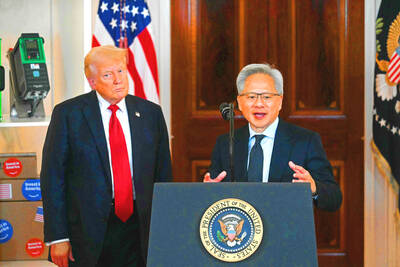
When Nvidia CEO Jensen Huang revealed on Friday last week that the company is working with the Trump administration on a new computer chip designed for sale to China, it marked the latest chapter in a long-running debate over how the US should compete with China’s technological ambitions. The reasoning has sometimes changed — with US officials citing national security, human rights or purely economic competition — but the tool has been the same: export controls, or the threat of them. Nvidia believes it can eventually reap US$50 billion from artificial intelligence (AI) chip sales in China. But it so far has

Continued from yesterday(延續自昨日) https://www.taipeitimes.com/News/lang In many Western countries, the most common form of tally marks employs a five-bar gate structure: four vertical lines followed by a diagonal slash. To form this group, one begins by drawing four parallel vertical lines, each representing one. For the fifth, draw a diagonal line across the existing four. This diagonal stroke effectively creates a distinct group of five. To continue counting, just initiate a new cycle in the same manner. A set of five tallies combined with a single vertical line next to it represents the number six. Across many Asian countries, the Chinese character